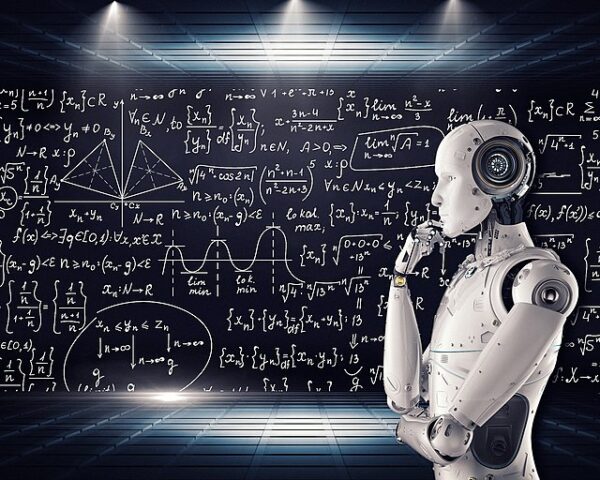If you’ve spent any time on the internet, you have learned that artificial intelligence has become the latest Holy Grail in technology conversation thanks to the rise of ChatGPT. CNBC writes, “The AI-powered chatbot, created by Microsoft-backed OpenAI, has both impressed and shocked with its ability to answer questions, write essays and even argue legal cases.”
The big question that often comes to most people’s mind after the wonderment wears off from seeing an AI produce a story, piece of art, or a song on command is: wait a second, could this thing do my job?
According to a new research paper, the answer is eventually going to be a yes.
The New York Post writes that a “new research paper claims that a staggering amount of employees could see their careers impacted by the rise of ChatGPT, a shockingly intelligent chatbot released in November.
Researchers from OpenAI and the University of Pennsylvania argued in a new research paper that 80 percent of the US workforce could have at least 10 percent of their work tasks affected by the introduction of ChatGPT.
They also found that about 19 percent of workers may find at least 50 percent of their duties impacted by GPT, or General-purpose technologies.
Researchers also found that higher-income jobs will likely have greater exposure to GPT, but that it will span across almost all industries.”
One such industry that’s already starting to see AI replace human workers is fast food. Jolt of Joyful recently shared a story about how McDonald’s its first nearly humanless store.
“From building cars to caring for the sick in hospitals, automation has become a part of our lives, but can it make a good Big Mac? A McDonald’s in North Texas is trying to find out. The Golden Arches recently launched a fully-automated store in Fort Worth, Texas to test the concept.
‘At just one location so far, customers can drive to the golden arches and expect to be served a Big Mac or a Happy Meal by a food and beverage conveyor instead of an actual, real-life human being,” wrote The Guardian.
‘A spokesperson for McDonald’s told the Guardian that the test concept “is not fully automated,’ emphasizing that the restaurant does employ a team comparable to that of a traditional store.
Smaller than a typical McDonald’s, the location is geared towards customers on the go rather than those who plan to dine inside. It limits interactions between team members and customers and uses ‘enhanced technology that allows the restaurant team to begin preparing customers’ orders when they’re near the restaurant.’
Customers can pick up their meals in a drive-through ‘order ahead lane’ or order at the touchscreen kiosk inside the store.’
McDonald’s said the goal of the concept is to make getting your food as seamless as possible.”
Business Insider said that we shouldn’t worry about going unemployed and being replaced by robots just yet, however. The magazine explained: “The futuristic McDonald’s is an experimental concept store outside Fort Worth, Texas, aiming to improve service speed and accuracy by effectively severing the relationship between its workers and customers. But that doesn’t mean there are no humans in the store. If you pay close attention to the video, you can see a worker in the back behind a pane of glass. McDonald’s has said the store isn’t “fully automated” by any means, and it employs a similar number of staff as a traditional store — they’re just in the back making the food and keeping things running. And despite the fact most customers will never see a Taco Bell worker at its newfangled store, it has plenty of people working in the kitchen.
Even if these tools seem more sophisticated, this isn’t the first robot-driven freak-out. Less than 10 years ago, new developments in technology spurred a similar fear that robots were coming for us. A 2014 analysis estimated that automation would wipe out 47% of all jobs by 2034 and that self-driving technology would eliminate the need for human taxi and delivery drivers, while long-haul truckers were thought to be on borrowed time. Nearly a decade later, these cataclysmic forecasts haven’t come to pass. Truck drivers are still in high demand, and self-driving technology is nowhere near replacing human jobs. In fact, a more recent 2020 report from the World Economic Forum estimated that while 85 million jobs would be replaced by machines by 2025, an estimated 97 million new jobs would be created to help support this new economy.
Amid the fear-mongering about a robot takeover, people often miss the degree to which machines still require human workers in order to function. Take customer service: For years, businesses have tried to cut costs by replacing human phone calls with chat-based, automated customer-service bots. But instead of replacing customer-service workers, many of these text-based tools still rely on human backups in complex situations and to make customers feel as if they are talking to a real person.”
Just don’t tell the robots. We don’t want them to get any ideas.
[Read More: Apple CEO Says Company and China Are ‘Symbiotic’]



